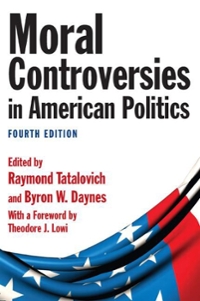solve the following questions correctly.,,,
Consider a simple economy with two goods, clothing and food, and two consumers Galina and Federica. Both Galina and Federica have utility function U = CF where Cis the amount of clothing and Fthe amount of food they each personally consume. Galina is endowed with 0 units of clothing and 200 units of food. Federica is endowed with 200 units of clothing and 0 units of food. a. Suppose that Pc= 1 and PF= 2 are the prices of clothing and food. If Galina and Federica act so as to maximize their utility, do these prices produce general equilibrium?(Yes or No) b. Find prices that do produce general equilibrium. (Round your answer to 1 decimal place (e.g., 32.1).) PF / Pc=?Question 2 (20 points] Suppose Thailand has settled into a sustained 10% ination rate caused by a high rate of money growth that shifts the aggregate demand curve so that it moves up by 10% every year. If this ination has been built into wage and price contracts, the short run aggregate supply curve shifts and rises at the same rate. Now suppose that the Bank of Thailand decides that ination must be stopped. The goals are to lower ination and unemployment. The bank of Thailand stops the high rate of money growth through the open market operation so that the aggregate demand curve will not rise. The policy of halting money could be costly if it leads to a fall in output. a] if the traditional model's View [SRAS with adaptive expectation] of the world is correct, will the plan work? Draw the graph and explain [4 points] b] If the new classical View [SEAS with rational expectation] of the world is correct. will the plan work? Draw the graph and explain [8 points] c) If the Keynesian View [SEAS with Rational expectation plus price and wage rigidity] of the world is correct, will the plan work? Draw the graph and explain [8 points] Determine the values in the Analysis section, then calculate the Retro premiums for the various loss scenarios. Policy Limit $2.000.000 Standard premium 5900.000 Premium Discount $75.000 Basic Premium 25% of Standard Premium Loss conversion factor 1.14 Loss limit $750.000 per occurrence Excess loss premium factor 7% Tax multiplier 1:08 Maximum Premium 150% of Standard Premium Minimum Premium 40%% of Standard Premium Analysis: Guaranteed Cost Premium Basic premium Excess loss premium Maximum Premium Minimum Premium Calculate the retro premium for the following losses and explain how much the policyholder must pay under each situation. $30,000 $400,000 $850,000The COOPERSMITH Corporation produces three products from one input. For each barrel of a liquid called Rival put into the separation process in Department A, the corporation obtains 20 gallons of Alpha, 30 gallons of Beta, and 5 gallons of Gamma. Alpha and Beta are accounted for as main products and Gamma as a byproduct. Product Alpha is sold at the split-off point for $4.00 per gallon. Beta must be further refined in Department B. Then Beta can be sold for $20 per gallon. Joint product costs are allocated to main products using the net realizable value method. In September 2016, 10,000 units of Alpha and 20,000 of Beta were sold. Gamma is further processed in Department C with further processing costs of $375. It sells for $1.00 per gallon. Subsequent to its transfer from Department A, a cost of $.70 per gallon is incurred on the packaging, selling, and administrative costs. Gamma is accounted for at time of production. In September 2016, 3,000 units of Gamma were sold. The weighted average method is used in all departments. Following are September 2016 production and cost data for Department A: Units started in September 900 barrels Units transferred out 750 barrels Beginning inventory, September 1 100 barrels Rival cost (100% complete $310 Conversion cost (25% complete) $150 Ending inventory, September 29 200 barrels Materials cost (100% complete) ? Conversion cost (75% complete) ? Abnormal spoilage (no residual value) 50 barrels Note: Inspection is at the 100% point Normal spoilage 0 barrels Rival cost (September) $2,690 Conversion cost (September) $4,600 Department B has no beginning inventory costs, but it does have $410,000 of September conversion cost. Required: 1 . Prepare the journal entry for the abnormal spoilage. 2 . What is the cost of the good units transferred out from Department A? For the remaining questions, assume that your answer to question 2 above was $6,000. 3. What is the inventoriable unit cost of Gamma? 4. How much of Department A's cost should be transferred into Department B? For questions 5 and 6 only assume that the time of sale method had been used for Gamma. 5. What is the inventoriable unit cost of Gamma? 6. What is the reported profit of Gamma in September 2016? 7 . If Alpha could be further processed ($27,000) into Delta (then selling for $6.00 each), what is the dollar gain or loss of doing so










